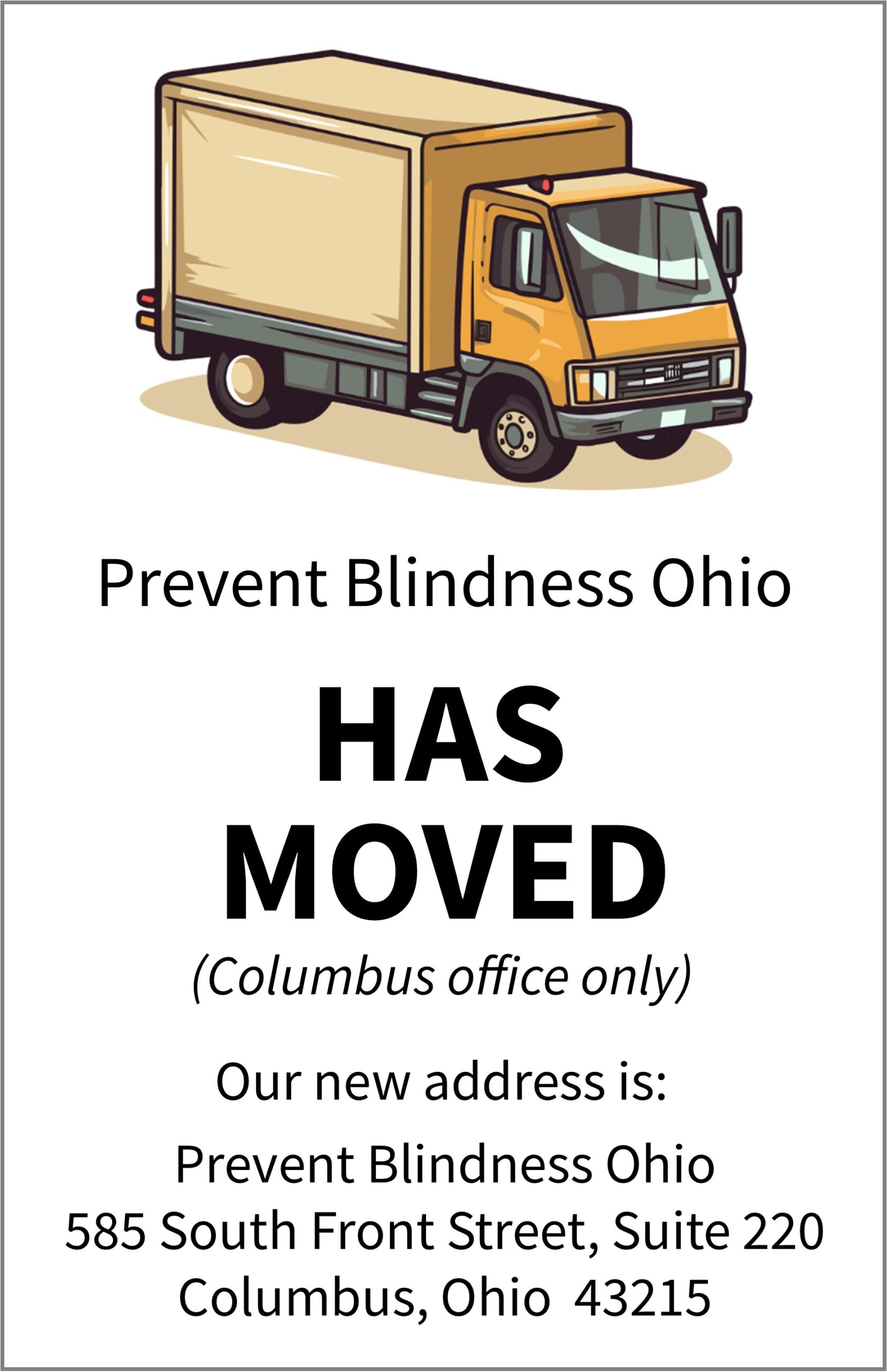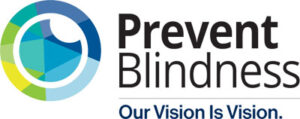FOR IMMEDIATE RELEASE
For more information:
Prevent Blindness, Ohio Affiliate
Dori Jennings
Phone: (614)270-0746
[email protected]
February Declared as Age-related Macular Degeneration and
Low Vision Awareness Month by Prevent Blindness
Columbus, OH (February 1, 2021) – Age-related macular degeneration (AMD) is a leading cause of vision loss in the United States. More women than men have AMD, and the risk increases with age. Today, according to the National Eye Institute, White Americans have the greatest likelihood of developing AMD. White Americans are projected to account for the majority of cases in the future as well. However, Hispanics will see the greatest rate of increase, with a nearly six-fold rise in the number of expected cases from 2010 to 2050. Smokers are also at higher risk for AMD.
According to estimates from the Prevent Blindness report, “Future of Vision: Forecasting the Prevalence and Costs of Vision Problems,” more than 2.2 million Americans, including 88,546 Ohioans, ages 50 and over have AMD in the year 2020. AMD is an eye disease that affects central vision and may occur in one or both eyes. Symptoms usually appear gradually over time, and may include difficulty seeing in the center of vision, straight lines appearing wavy or missing, and trouble seeing in dim light.
Prevent Blindness, Ohio Affiliate has declared February as Age-related Macular Degeneration and Low Vision Awareness Month to help educate the public on AMD types, treatment options, low vision services and more.
There are two types of AMD: dry and wet. The dry form is more common and accounts for 70–90 percent of cases of AMD. Dry AMD is caused by the appearance of small yellow deposits called drusen, which form under the retina. These are accumulated waste products of the retina, which can grow in size and stop the flow of nutrients to the retina. This will cause the retinal cells in the macula that process light to die, causing vision to become blurred. This form of the disease usually progresses slowly.
The American Academy of Ophthalmology states that dry AMD patients with lots of drusen or serious vision loss may benefit from taking a certain combination of nutritional supplements. A large study (AREDS and the later AREDS 2 study) found those people may slow their dry AMD by taking these vitamins and minerals daily:
- Vitamin C (500 mg)
- Vitamin E (400 IU)
- Lutein (10 mg)
- Zeaxanthin (2 mg)
- Zinc (80 mg)
- Copper (2 mg)
Wet AMD generally causes more rapid and more serious vision loss. According to the National Eye Institute, wet AMD, or advanced neovascular AMD, is a serious type of AMD that happens when a protein called vascular endothelial growth factor (VEGF) makes too many blood vessels grow in the back of the eye. These blood vessels can damage a part of the eye called the macula, leading to central vision loss. The NEI states that the most common treatment doctors use to slow vision loss from wet AMD is called anti-VEGF injections. These medicines help stop bleeding and leaking from blood vessels in the back of the eye.
“The best way to save vision from AMD and other forms of eye disease to get an eye exam from an eye care professional,” said Sherry Williams, President & CEO of the Ohio Affiliate of Prevent Blindness. “Early detection and adhering to treatment can actually save your sight for years to come.”
In Ohio there are 170,219 individuals with visual impairment or blindness. Low vision is vision loss that cannot be corrected with glasses, contacts or surgery. Low vision can include blind spots, poor night vision and blurry sight.
Low vision aids can help patients stay independent. Special training, called vision rehabilitation, can provide skills for living with low vision. A low vision specialist will help determine the right combination of aids for every patient’s needs.
Low vision aids include:
- Magnifying glasses, screens and stands
- Telescopic lenses
- High-intensity reading lamps
- Large-print newspapers, magazines and books
- Closed-circuit TVs that magnify a printed page on screen
- Computers and tablets
Prevent Blindness offers the no-cost “Living Well with Low Vision” online resource at lowvision.preventblindness.org. A library of useful tools includes a self-help guide to nonvisual skills, a visual skills workbook for people with AMD, a guide to caring for the visually impaired, and a range of resource, product and service directories to help individuals maintain their independence and quality of life.
For more information on AMD, low vision and other eye diseases, please call Prevent Blindness, Ohio Affiliate at 800-301-2020 or visit pbohio.org.
About Prevent Blindness, Ohio Affiliate
Founded in 1908, Prevent Blindness is the nation’s leading volunteer eye health and safety organization dedicated to fighting blindness and saving sight. The Ohio Affiliate of Prevent Blindness serves all 88 Ohio counties, providing direct services to more than 1,000,000 Ohioans annually and educating millions of consumers about what they can do to protect and preserve their precious gift of sight. For more information or to contribute, call 800-301-2020. Visit us on the web at pbohio.org, Facebook at facebook.com/pbohio/, or Twitter at twitter.com/PB_Ohio
###


